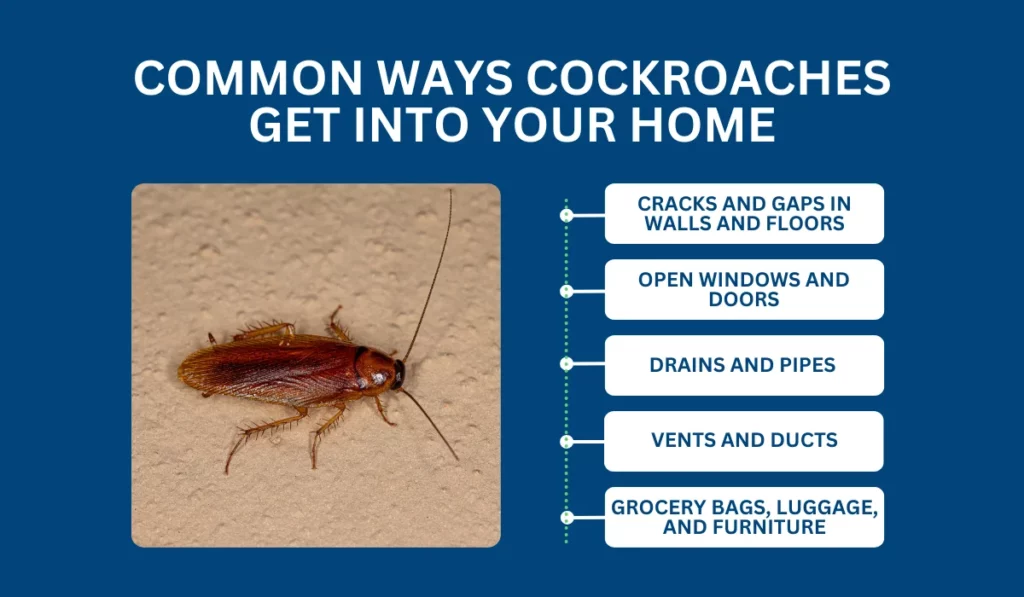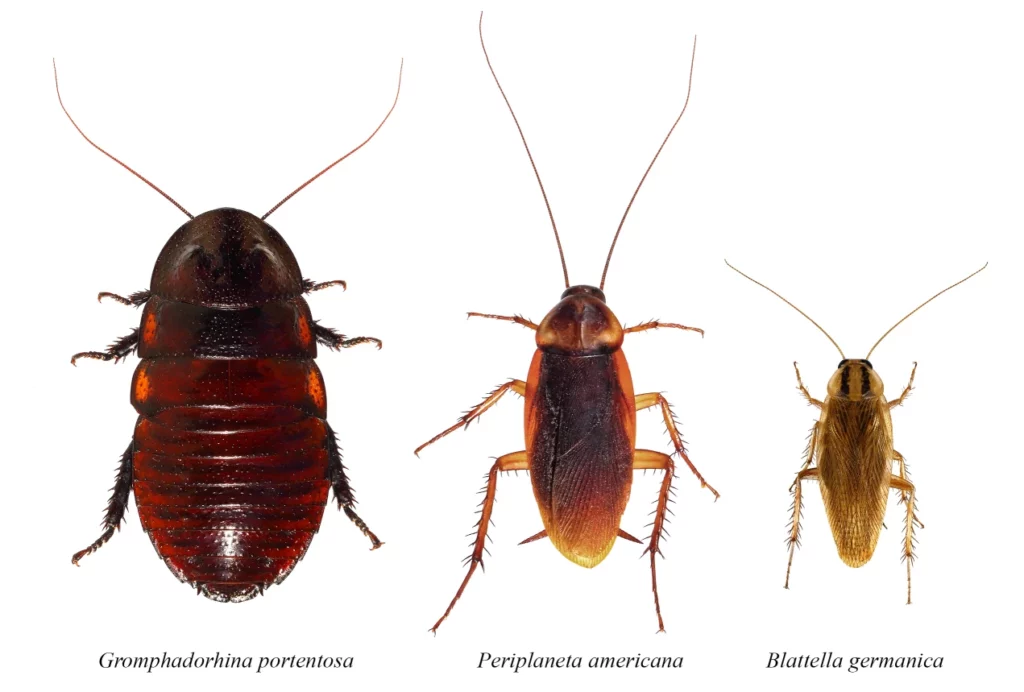Florida’s subtropical climate—featuring warm temperatures, humidity, and mild winters—allows cockroaches to remain active and reproduce all year. In Ocala, a vibrant city known for its equestrian heritage and proximity to natural attractions, these resilient pests can quickly establish hiding spots if not detected. Unsealed food, leftover crumbs, and damp areas give roaches the perfect conditions to multiply behind walls, under appliances, or in low-traffic corners. This service page highlights why roaches flourish in Florida, the indicators of an infestation, and why turning to a professional cockroach exterminator offers the most reliable way to restore a clean, pest-free environment.
Whether you live in Ocala or manage properties in neighboring Summerfield, Dunnellon, or Belleview, recognizing roach infestations early—and enacting thorough, strategic treatments—safeguards occupant health, prevents further spread, and eliminates the headache (and cost) of repeated do-it-yourself attempts that rarely eradicate roach colonies entirely.
Why Roaches Thrive in Florida
Mild Winter Temperatures
In colder states, subfreezing winters naturally limit roach populations for months. Florida’s gentle cold season rarely dips below freezing, removing that check on roach breeding. Heated or air-conditioned interiors hover around 65–85°F year-round, permitting roaches to lay eggs and forage consistently.
High Humidity and Abundant Moisture
Cockroaches need water to survive. Florida’s humidity, frequent rain, or even small leaks under sinks or around air conditioners supply them with essential moisture. Kitchens, bathrooms, or laundry areas often host unseen damp corners if occupant vigilance is lacking, making perfect roach harborage sites.
Ample Food Sources
From unsealed pantry staples to pet food bowls left overnight or improperly stored trash, roaches adapt to any available organic material. In suburban or tourism-friendly areas near Ocala, leftover crumbs or open garbage bins inadvertently invite these pests to settle indoors.
Rapid Reproduction
A single female roach can produce multiple egg cases (oothecae), each filled with numerous embryos hatching in weeks. With no seasonal slowdown in Florida’s mild winter, a small roach presence can balloon rapidly into a full-blown infestation if occupant or property manager detection slips.
Multiple Roach Species
Florida sees numerous species, each with unique preferences:
- German Cockroach: Small, prolific, typically nesting indoors near kitchen or bathroom humidity.
- American Cockroach: Larger “palmetto bugs,” frequenting sewers or utility areas, occasionally flying indoors.
- Smoky Brown Cockroach: Prefers outdoor settings, sneaking inside for food or cooler temps.
- Brown-Banded Cockroach: Occupies drier, elevated areas—like cabinets, electronics, or behind wall décor.
All can find consistent breeding opportunities in Florida’s year-round warmth.

Telltale Signs of a Cockroach Infestation
- Live Roach Sightings
- Roaches hide by day, emerging at night. Spotting them in daytime suggests a crowded nest pushing some into the open.
- Kitchens or bathrooms often reveal roaches when switching lights on after dark.
- Roaches hide by day, emerging at night. Spotting them in daytime suggests a crowded nest pushing some into the open.
- Droppings or Smear Marks
- German roach droppings appear as pepper-like specks, while American roach droppings are larger.
- In damp corners, roaches may leave brownish smears on surfaces.
- German roach droppings appear as pepper-like specks, while American roach droppings are larger.
- Egg Casings (Oothecae)
- Bean-shaped capsules with multiple eggs. Discovered in dark crevices, behind appliances, or near baseboards.
- Finding oothecae confirms active breeding.
- Bean-shaped capsules with multiple eggs. Discovered in dark crevices, behind appliances, or near baseboards.
- Musty or Oily Odors
- Heavier infestations emit a characteristic, unpleasant smell from droppings and roach secretions.
- The stronger the odor, the more advanced the population usually is.
- Heavier infestations emit a characteristic, unpleasant smell from droppings and roach secretions.
- Chewed Packaging
- Roaches gnaw cardboard or thin plastic to access stored foods.
- Ragged holes or shredded edges in boxes or pet food bags hint at foraging roaches.
- Roaches gnaw cardboard or thin plastic to access stored foods.
- Complaints from Occupants
- In multi-unit housing or rentals near Summerfield, Dunnellon, or Belleview, occupant sightings can signal a wider building spread.
- Quick occupant or manager response curtails infiltration between units.
- In multi-unit housing or rentals near Summerfield, Dunnellon, or Belleview, occupant sightings can signal a wider building spread.
The Dangers of Ignoring Cockroaches
Disease and Bacterial Spread
Roaches crawl through sewers or garbage, collecting pathogens on their bodies—like E. coli or salmonella—that can be deposited on utensils, dishes, or stored foods. Occupants risk food poisoning or gastrointestinal distress if surfaces or items become contaminated.
Allergen Triggers
Cockroach droppings, shed skins, and saliva contain allergens that may exacerbate asthma or respiratory issues, especially in children. Untreated infestations raise allergen levels within enclosed spaces, impacting occupant well-being.
Rapid Population Growth
Failing to eliminate the initial group grants roaches time to produce multiple egg cases. In Florida’s mild climate, they breed relentlessly, transforming a minor nest into dozens or hundreds of roaches, saturating kitchen appliances, pantries, or behind walls.
Structural & Reputational Impact
Although roaches don’t eat wood like termites, they dirty stored items with droppings and produce unpleasant odors. For hotels, restaurants, or rental properties, occupant sightings can trigger negative reviews or occupant dissatisfaction, harming the brand image.
Heightened Treatment Costs
Small roach issues addressed early typically require fewer chemicals or occupant displacement. Larger infestations hidden behind walls or spanning multiple rooms often need repeated treatments and occupant inconveniences, driving up expense and occupant stress.
Why a Professional Cockroach Exterminator Is Essential
Comprehensive Inspection
A cockroach exterminator meticulously checks kitchen corners, bathrooms, laundry rooms, or behind major appliances for droppings, egg cases, or roach runways. Confirming which roach species (German, American, etc.) shapes whether baits, crack-and-crevice sprays, or perimeter barriers become priority.
Targeted Baiting & Spraying
Exterminators use gel baits, placed discreetly in corners or under sinks, to lure roaches. The slow-acting poison is carried back to nests, decimating colonies. Residual sprays along baseboards or behind fixtures kill roaches crossing treated surfaces, outpacing occupant do-it-yourself attempts that often overspray living areas or endanger pets.
Insect Growth Regulators (IGRs)
IGRs prevent nymph roaches from maturing into reproducing adults, straining future infestations. When paired with adulticidal baits, IGRs fully disrupt roach life cycles, surpassing partial occupant solutions that merely kill visible adults.
Less Chemical Exposure
Exterminators concentrate insecticides in roach hiding zones, like cracks or corners, sparing occupant or pet contact. Gel baits remain out of reach for children, ensuring lethal roach ingestion but occupant safety.
Follow-Up and Preventive Guidance
Roach eggs can hatch weeks later. Many exterminators re-check occupant feedback, re-bait, or adjust pesticide applications if fresh droppings appear. Occupant instructions—like storing food properly, sealing leaks, or discarding cardboard piles—fortify roach-free conditions long term.

Typical Methods for Cockroach Treatments
- Inspection & Species Identification
- Professionals scan corners, behind stoves or fridges, or near leaks for egg casings or smear marks.
- Confirming roach type clarifies target approach—German roaches often need intensive kitchen-based baits, while American roaches might require perimeter or utility area treatments.
- Professionals scan corners, behind stoves or fridges, or near leaks for egg casings or smear marks.
- Gel Baits & Bait Stations
- Gel baits placed along roach travel paths (under sinks, behind appliances) deliver poison that roaches share within nests.
- Bait stations remain tamper-resistant, protecting occupants or pets from direct exposure.
- Gel baits placed along roach travel paths (under sinks, behind appliances) deliver poison that roaches share within nests.
- Residual Sprays & Dust
- Applied to cracks, wall voids, or baseboards where roaches traverse.
- Roaches crossing treated zones pick up or ingest lethal chemicals, speeding population collapse.
- Applied to cracks, wall voids, or baseboards where roaches traverse.
- Insect Growth Regulators (IGRs)
- Mixed with adulticidal baits or sprays, preventing nymphs from developing into reproductive adults.
- Full-lifecycle coverage significantly lowers roach numbers over time.
- Mixed with adulticidal baits or sprays, preventing nymphs from developing into reproductive adults.
- Exclusion & Sanitation
- Occupants or professionals seal foundation gaps, fix door sweeps, or patch screen holes.
- Properly storing food in sealed containers and removing leftover crumbs or spillage reduce easy meals for roaches.
- Occupants or professionals seal foundation gaps, fix door sweeps, or patch screen holes.
- Moisture Management
- Roaches rely on water. Repairing leaks under sinks, sopping up condensation, or venting damp bathrooms hamper roach survival.
- Less humidity and fewer water sources mean roaches cannot easily nest in or near occupant living spaces.
- Roaches rely on water. Repairing leaks under sinks, sopping up condensation, or venting damp bathrooms hamper roach survival.
- Scheduled Follow-Up
- Hatching egg cases or missed pockets might produce fresh roaches weeks post-initial treatment.
- Occupant re-check or professional revisit ensures newly hatched nymphs also meet lethal conditions, cementing occupant calm.
- Hatching egg cases or missed pockets might produce fresh roaches weeks post-initial treatment.
Service Areas: Ocala, Summerfield, Dunnellon, Belleview
While roaches thrive across Florida’s mild winter environment, this page zeroes in on Ocala, a central Florida city bridging equestrian culture and suburban expansions. Our cockroach exterminator expertise also covers:
- Summerfield: Merging rural and suburban living, occupant or business oversight remains essential to blocking roach infiltration in kitchens or bathrooms.
- Dunnellon: Known for scenic river settings, occupant or staff vigilance hamper roaches from capitalizing on leftover scraps or moisture.
- Belleview: A smaller city blending older homes with new developments, each susceptible if occupant housekeeping or structural sealing lapses.
Florida’s mild winters don’t slow roaches, meaning occupant synergy plus specialized roach control prove vital to removing or blocking them thoroughly.

Why Choose Us
Florida-Customized Solutions
We adapt recognized roach control approaches—gel baits, IGRs, residual sprays—to central Florida’s climate and occupant routines. Occupant housekeeping merges with extermination methods for a synergy that surpasses partial do-it-yourself attempts, ensuring adult roaches and new hatchlings face lethal outcomes.
Comprehensive Inspections
Before baits or sprays, technicians systematically check behind large appliances, under sinks, or in damp corners for droppings, egg casings, or smear marks. Confirming roach species clarifies exact locations to treat (kitchens vs. perimeter utility areas).
Targeted, Safe Products
We strategically place insecticides or baits in cracks, corners, or behind appliances—common roach hideouts—rather than saturating occupant floors or counters. Gel baits remain hidden, killing roaches effectively but sparing occupant or pet chemical exposure.
Exclusion & Sanitation Tips
After current roaches are removed, occupant synergy—like sealing foundation cracks, eliminating leaks, or storing foods in sturdy containers—prevents new invasions. This occupant-professional collaboration denies roaches moisture, leftover scraps, and easy re-entry.
Follow-Up & Accountability
Roach eggs can hatch weeks post-initial kill. Many exterminators schedule occupant re-check calls or revisit if droppings persist. Adjusting baits, re-treating cracks, or occupant housekeeping ensures thorough occupant satisfaction that no roaches remain hidden.
Next Steps
Finding roaches dart when lights flip on, uncovering pepper-like droppings behind appliances, or noticing egg casings in cabinets? Contact us to learn more or schedule your service. Our cockroach treatments for Ocala, Summerfield, Dunnellon, and Belleview merge property-wide inspections, carefully positioned gel baits or sprays, occupant-friendly sealing and sanitation advice, plus vigilant follow-ups—fully eliminating roaches and impeding new ones from returning.
Act swiftly to save occupant health from roach-borne bacteria, keep property contamination at bay, and preserve occupant or guest trust if you manage rentals or commercial sites. Rely on our Florida-specific cockroach exterminator skillset to eradicate these tough pests swiftly, shutting down their year-round breeding advantage in the mild Florida winter climate.
Maintaining a Roach-Free Environment
After professionals remove roaches, occupant best practices keep them from returning:
- Secure Food & Garbage
- Store cereals, grains, or pet kibble in sealed containers; keep counters crumb-free.
- Use trash bins with tight lids, empty them often, and rinse out sticky residues regularly.
- Store cereals, grains, or pet kibble in sealed containers; keep counters crumb-free.
- Eliminate Moisture
- Repair leaking faucets or air conditioner lines, mopping up standing water.
- Vent damp areas like bathrooms or laundry rooms, lowering humidity that roaches seek.
- Repair leaking faucets or air conditioner lines, mopping up standing water.
- Declutter Storage
- Organized shelves or clear bins reveal droppings or chew marks quickly, inhibiting large nesting pockets.
- Minimizing cardboard boxes denies roaches potential hideouts behind stacked items.
- Organized shelves or clear bins reveal droppings or chew marks quickly, inhibiting large nesting pockets.
- Check Door Sweeps & Screens
- Caulk gaps along windows, fix damaged screens, and ensure door sweeps seal fully.
- Prevent roaches from sneaking inside from yard edges or communal hallways.
- Caulk gaps along windows, fix damaged screens, and ensure door sweeps seal fully.
- Schedule Pet Bowl Times
- Feed pets on a schedule; remove leftover kibble instead of letting bowls sit overnight.
- Store large pet food bags in sturdy plastic or metal bins, out of roach reach.
- Feed pets on a schedule; remove leftover kibble instead of letting bowls sit overnight.
- Stop Paper or Cardboard Accumulation
- Roaches hide behind stacked newspapers or cardboard.
- Keep recycling or storage areas tidy, discarding materials that linger too long.
- Roaches hide behind stacked newspapers or cardboard.
- Monitor & Re-Treat if Needed
- If occupant sightings or droppings re-emerge, quickly consult an exterminator to handle minor incursions before they escalate.
- Re-check corners or behind appliances ensures no newly hatched roaches slip by unnoticed.
- If occupant sightings or droppings re-emerge, quickly consult an exterminator to handle minor incursions before they escalate.
By combining occupant habits—such as sealed food storage, dryness, and clutter removal—with specialized cockroach treatments when needed, property owners in Ocala, Summerfield, Dunnellon, and Belleview effectively stifle Florida’s year-round roach advantage. Despite mild winters letting roaches breed freely, occupant synergy plus professional synergy keeps them from regaining a foothold, guaranteeing a cleaner, roach-free living or commercial environment.
